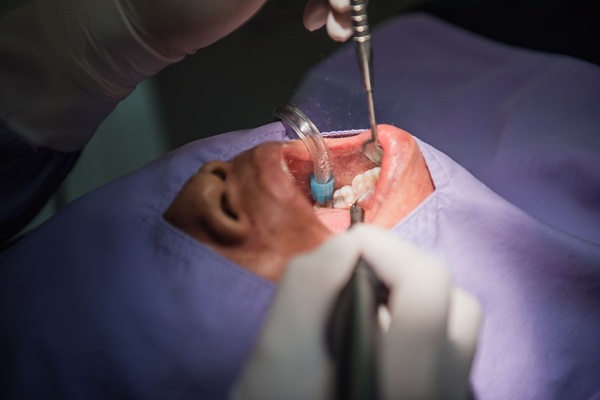Cavity Checks from a Family Dentist
 One of the main reasons people typically visit a family dentist is to get a cavity check. The American Dental Association states that 91% of adults in America over the age of 20 have had at least one cavity. Generally included in each six-month wellness examination, a cavity check can help both identify areas where cavities may be forming and monitor existing cavities that may be too small for a filing. Here are some things to expect during this type of appointment.
One of the main reasons people typically visit a family dentist is to get a cavity check. The American Dental Association states that 91% of adults in America over the age of 20 have had at least one cavity. Generally included in each six-month wellness examination, a cavity check can help both identify areas where cavities may be forming and monitor existing cavities that may be too small for a filing. Here are some things to expect during this type of appointment.
Common cavity detection methods
Unfortunately, many people wait until they have tooth pain before going to the dentist. Under these circumstances, any existing cavities are usually obvious without using any probing instruments. While certain cavities are large enough to be seen with the naked eye, others can only be identified upon closer examination using more sophisticated tools.
Probing tools
Dental professionals frequently use probing tools to poke at tooth enamel and determine whether it is hard or soft. A sickle probe is a tool used by dentists to check for cavities until more modern methods were developed. This probe made it easier for a dental professional to locate soft spots on the enamel that had been weakened by decay and worn down by erosion. A briault probe is curved, has sharp points on both ends, and is useful for locating soft spots in between the teeth. A dental hygienist may still use these probes during a cleaning to determine if further examination is needed in a specific area of the mouth.
X-rays
A cavity can be easily identified in an X-ray by a family dentist. It will show up as a dark spot in a white tooth. X-rays can pinpoint the location and depth of cavities, including those in between the teeth. Because of this, most dentists recommend having imagery taken regularly. In certain cases, especially in areas between the teeth, cavities may start to form that are not visible to the naked eye. Getting an X-ray can identify these areas so a dentist can keep a close watch on them. Although less common, cavities can also form underneath previous fillings. When this happens, the only way to see the new decay is with an X-ray.
Conclusion
Far from being an unnecessary nuisance, getting frequent cavity checks from a family dentist can help prevent further decay and damage to teeth. Identifying areas to watch or fix can allow the teeth to stay healthy and last as long as possible. A dentist may use one or all three of these methods to look for cavities to make sure undetected decay does not exist.
Request an appointment or call Carolina Smiles Family Dental at 828-884-3702 for an appointment in our Brevard office.
Recent Posts
Maintaining optimal oral health requires consistent care and professional guidance. A family dentist plays a crucial role in ensuring the dental well-being of individuals of all ages. From preventive care to addressing specific concerns, regular visits to a family dentist provide comprehensive services that help maintain healthy teeth and gums while preventing potential oral health…
Seeing your family dentist for regular checks and treatments can maintain or improve your dental health. You can avail of basic treatments during your visits. Knowing what each one is can help you make informed decisions. Here are the common treatments that you can get from your family dentist.Cavities may worsen over time. Dental decay…
A regular visit to the family dentist may reveal that a patient has a chipped or cracked tooth. A patient generally knows if a tooth is fragmented due to its appearance. A tooth can become damaged from improper biting, cavities, poor hygiene, teeth grinding, and trauma. A cracked tooth is often harder to notice because…


